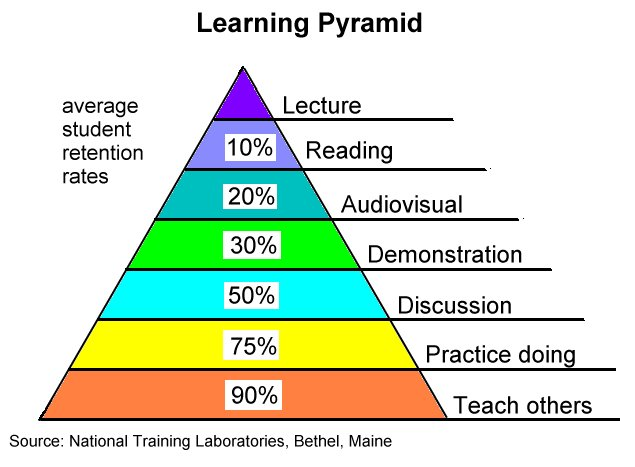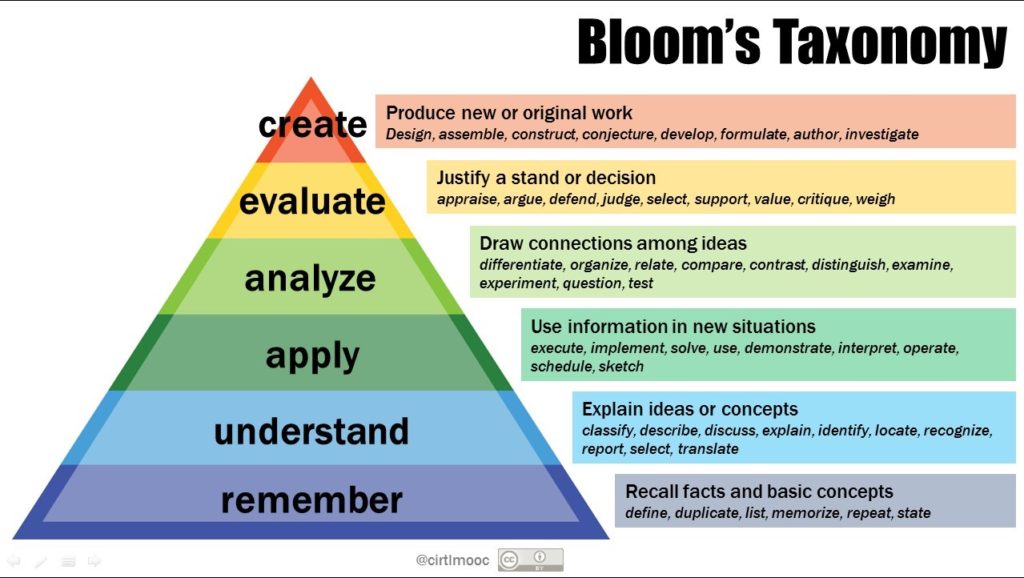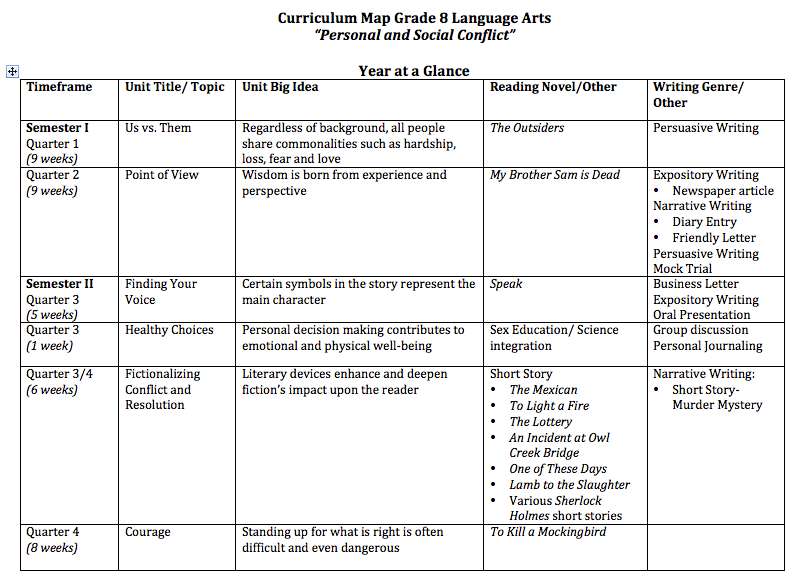10 Questions to Tackle in Demonstrating Knowledge of Content and Pedagogy
9/6/2017

In the late 90's, many new educators created portfolios to show prospective employers when they went job hunting. It was thought that these employers would spend time digging into the portfolio contents and make a decision on hiring one of us! While I hope many administrators did this, I feel my portfolio was never thoroughly inspected. Was this a waste of time creating…an empathetic, "NO!" I truly believe these portfolios should be required by all new potential teachers.
The hours we poured into creating the contents of a portfolio helped create who were as educators. What it did was congeal at a young age my thoughts and beliefs on education. I still have my portfolio and I am not afraid to say that I laugh each time I read the "Philosophy of Education," as well as the educational jargon of 20 years ago that employers wanted to hear. We were expected to know what this jargon actually meant without having a classroom of our own, yet!
As we left college, many of us were digging into what we truly believed about education formulated around many of our professors, textbooks, teachers in our field experiences, and even the newly created Internet! We then garnered our first teaching positions, and much of we thought was altered or changed immediately. We learned to meld in the latest changes in pedagogy and research, as well as changing our methodologies and strategies to meet the current students sitting in our classrooms.
Here are 10 questions to tackle in your strive for being an exemplary teacher. This component in the Charlotte Danielson Model is massive. The amount of artifacts and evidence to prove you are exemplary come from years of study, that is not say someone new to education cannot expound evidence in the exemplary category. In my twenty years of education, I have not found a new teacher that "lives" in the exemplary category in the first few years of teaching…that would be one special teacher whom you should never give up!
1 - What is My Philosophy of Education, Whom Do I Model my own Specific Teaching Practices, and Do My Practices Reflect the Latest Research in the Pedagogy of the Discipline?
What we believe in our educational philosophy goes back to what we read, see, and do. We read articles, books, and electronic media. We watch others teach, facilitate, and collaborate. Lastly, we learn from doing…what and how we teach goes back to our beliefs and personality.
To be honest, most of us can only remember a couple names from educational psychology course and a couple facts that we may remember. Popular philosophers that we remember are the theories from John Dewey, Jean Piaget, Lev Vygotsky, and B.F. Skinner to name a few.
Next, our school districts, administrators, and teaching peers supported the development of our philosophy on how we teach students. Second, textbooks or curriculum requiring us to instruct in certain manner is a portion of our philosophy. In fact, some curriculum gives you word for word what you are supposed to say when "teaching" the lesson. This statement alone makes you start thinking about what you truly believe in and how you reach and engage students.
I believe we are in an exciting time where the latest brain research has changed the way we should be teaching our students. We are now looking at ways to change our instruction with trauma and anxiety informed practices. The amount of students we see that have had adverse childhood experiences has increased. This should change our instructional strategies and pedagogy.
We may change our methodology because the latest research states a discipline is taught more effectively in that fashion. One example is in the discipline of science. The push for Inquiry-based learning about 15 years ago has changed how students learn and get excited about science, as well as changing how teachers instruct. Some teachers are successful using inquiry-based learning in other subject areas.
As a teacher, we should be able to create a time line of practices, philosophies, inspirational people, and other resources that have added to our personal philosophy of education. Tracking these changes solidifies what you truly believe in, as well as an effective reflective practice.
2 - Do I Know My Grade Level Standards…Prior and Post Grade Levels?
As a first year teacher this is one of the most difficult tasks to accomplish…fully understand the standards you are teaching at your grade level. In many states, the common core was touted to relieve the overabundance of old standards. In my state, I believed that I truly had more time to go deeper with the standards that were listed. Unfortunately, since 2009 in our state, we have come to realize it is still difficult to cover all the standards in the 1,080 hours of school per year. We must prioritize what standards we hit according to the student achievement data we analyze.
Master teachers at the exemplary level know their standards, and even more remarkable, they know the standards at the previous grade level and the grade level above them. That is a lot of information to know and be able to use when designing appropriate learning experiences.
The ability to know where your students have been (mastering last year's educational standards) is important. Teachers have a new set of students in their room. It is difficult to teach students if you do not assess how well they did with the past standards. Filling holes is something teachers will always be doing even as we continue to personalize learning in our classrooms. As a teacher, we must look at data from the prior year. We find out the concepts the whole class needs further support, as well as what they did well. This helps you become more efficient and effective when planning instruction.
The ability to know where your students are going after you is just as important. Exemplary teachers know what standards are taught at the next grade level. Likewise, with students who have holes, you will have students who have already mastered many, if not all of the standards, that you are required to teach at the current grade level. You will need to design curriculum that challenges them and is appropriate to their readiness level.
3 - What are the Most Prevalent Misconceptions when I Teach My Content and Am I Designing Questions to Fill These Student's Gaps?
Understanding our students learning processes helps us decide the instruction: 1) how we will teach, 2) what we will teach, and 3) the pace at which we will teach it. We find that students have misconceptions about certain topics in the disciplines that we teach. If we know ahead of time what the most prevalent misconceptions are we can then design learning experiences and questions that fill the gaps. For example, teachers who have taught for multiple years start to learn that they may need to spend more time on the greatest common factor and least common multiple. The misconceptions that surround these two math concepts can change the lesson for the day, week, and possibly the whole unit!
Exemplary teachers analyze data to determine what difficulties and misconceptions that students had in prior grades. In order to build your content on the schemata of prior learning experiences, we must understand the misconceptions our students possess. Many textbook companies have listed common misconceptions in the teacher's editions of the books, but not all!
4 - How Well Can I Connect My Content, Plans, and Practices Both Intra and Interdisciplinary?
One of the difficulties teachers find is the ability to cover all the content. We must find and connect our curriculum across the disciplines. We can teach more efficiently if we are able to cover multiple standards across several disciplines at once. Many units of study at the elementary level may include interdisciplinary learning experiences. As we departmentalize and specialize, we find that these connections are done less and less. How can we ensure and create interdisciplinary units when we departmentalize our subject areas? We must communicate with our colleagues and make it a priority.
Brain research states that students learn content more effectively when they can connect to other others or disciplines. The ability to create learning experiences where students complete tasks in multiple subject areas such as math, reading, and science all in one lesson is remarkable. Students are inherently more engaged when learning experiences cross disciplines.
Lessons that connect intra-disciplinary are just as powerful. Exemplary teachers must understand the curriculum so well that we can connect back to other prior concepts, as well as planting seeds for future learning experiences. For example, when working on the early settlers of North America stopping to discuss the power of the Magna Carta plants the seed for discussion on the need for a Declaration of Independence from Britain.

5 - How Well Do I Plan for Alternative Thinking by Students in My Instruction?
One of my math teachers in my educational experience taught math in one method. This method was described in the textbook, and there were no other alternative ways that math was taught. My brain worked differently. I was able to find the area of a 3, 4, 5, or 6 sided shape through a quick mental math procedure. Guess what? I did not show my work. Points were taken off my final grade because I did not show the processes I used in order to get the correct answer. I did not use the equation stated nicely in the textbook!
Over 20 years later, we now know from research, as well as from the latest textbook companies, alternative thinking or the ability to do work differently is not only acceptable, but also encouraged. For example, only teaching one way to multiply might could exclude one fourth of the class that needs to learn with visual representations.
If you are working to be an exemplary teacher, you understand that there are multiple ways to find the solution to most questions and problems across the disciplines. These teachers are proficient in using the multiple strategies, and yet be humble if a student finds a new strategy that you did not know. Name that strategy after them!
6 - Am I Accurately Assessing Where My Students are so Instruction Can Be Designed to Their Readiness Level?
Too many times educators start teaching on page one of the textbook because…that is the first page! This screams to us that the book drives the instruction, not the students seated in front of us. Master teachers spend time dissecting their student's achievement even before they reach their classrooms. They know as a whole class what were the student's strengths and weaknesses last year. They know where they need to start because they analyze the data from the previous year and it told them to start with single digit multiplication facts. Starting on page one of the textbook with double-digit multiplication will be difficult!
Teachers who are exemplary spend time reading through student records, looking at previous test data, and reading all about the students in their classroom from their permanent file or electronic file. Many teachers complete a yearlong instructional plan, mapping their curriculum. The state standards and district expectations may tell you when and what to teach, but we need to take into account our student's readiness level.
7 - Do I Plan For Multiple Strategies In a Lesson to Engage and Meet The Current Needs of All Learners?
Educators many times teach a concept in one fashion, which might meet the needs of 80% of our students. We must be ready to change mid-stream and add in another strategy to meet the needs of the other 20%. It is difficult for teachers to design lesson plans in this fashion. We must ask ourselves, how can we continue teaching content when the 20% did not learn it the first time, and now we have more students that did not master the concepts of the second lesson. Obviously, the 20% now increases.
Master teachers understand that they need multiple strategies built into their lesson in order to meet the needs of all their students. They are not afraid to assess repeatedly during the lesson to make sure students understand the content. If they notice some students are not mastering the content, the teacher may group them together and teach a mini lesson with a different strategy.
8 - In My Lesson Design, Do I Allow for Discussion, Critical Thinking, and Am I Able to Answer Student's Questions Accurately to Further Their Learning?
Research states that if a teacher only uses lecture as their main teaching strategy, less than 5% of learners will retain the content (see chart below). Master teachers plan time in their lessons for discussion and critical thinking. These teachers know that questions drive the discussion, what questions they are going to ask prior to the lesson, and they are able to create strong questions in the middle of the lesson.

A teacher who is working towards exemplary status is able to answer most questions that students pose. Yet, they are humble when they cannot answer a student question and they promise to get back to them with some out of class research, or assign someone to research for them.
Exemplary teachers are able to pose questions that go up and down Bloom's Taxonomy adjusting to what the students are giving you during instruction (See chart below). They are able to make questions easier to answer, more difficult, as well as changing the structure of how students are answering. Students may be talking in teams of two, small group, or even as a whole group response.

9 - Can I Plan a Unit of Study Using the Backward Design that is Appropriately Sequenced and Tailored to the Students I Currently Have in My Class?
For almost 20 years, the use of Understanding by Design, Jay McTighe and Grant Wiggins, has been the acceptable planning template for much of the curriculum and delivery strategies in education. In this philosophy, teachers start with "the end mind." Exemplary teachers ask how the students will show their mastery of the content at the end of the unit of study, then they work backwards to build lessons that will scaffold learning to meet the end goal.
Master teachers understand the backward design must take into account the current students seated in front of them. A teacher may create a yearlong curriculum map, similar to this blogger (Kimberly Ray) based on Heidi Hayes Jacobs' work (See chart below), but changes need to be made based on the achievement data of your current students.

10 - Do I Know My Content So Well That I am Able to Teach It with Positive Results to Mentor, Coach, and Provide Professional Development For Others?
This last question definitely sets exemplary and master teachers apart from all others: can they teach others? These top teachers know their content so well they can coach and provide professional development for others. In addition, the students in these master teacher classrooms display academic achievement and growth.
Many teachers know their content well, but it takes a special teacher to take it to the next level of teaching others. If you refer to the Learning Pyramid above, you will note that teaching others is the highest level of understanding.
This component takes time; in fact, several years might be more accurate. Changing grade levels every year may be a deterring factor from a teacher garnering the exemplary status. Teachers must spend time learning their content and the specific learning styles of the students sitting in front of them.
By digging deep into each of these questions, you are on your way to becoming exemplary!
(Charlotte Danielson Model: Domain 1 Component a)
MORE ROCK MY EVALUATION RELATED READINGS:
- Demonstrating Knowledge of Content and Pedagogy (Currently here)
- Demonstrating Knowledge of Your Students
- Setting Instructional Outcomes
- Demonstrating Knowledge of Resources
- Designing Coherent Instruction
- Designing Student Assessments
- Learning How to Say No and Set Boundaries with Parents - November 21, 2022
- If You Had Only One Behavior Strategy to Use in Your Classroom, What Would It Be? - September 26, 2022
- Live Your Code: 7 Strategies That Will Help You Be the Most Effective Educator You Can Be - August 15, 2022









